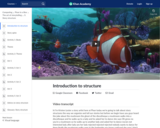
Welcome to structure!
- Subject:
- Applied Science
- Arts and Humanities
- Computer Science
- Graphic Arts
- Material Type:
- Lesson
- Provider:
- Khan Academy
- Provider Set:
- Pixar
- Author:
- Disney Pixar
- Khan Academy
- Date Added:
- 07/14/2021

Welcome to structure!
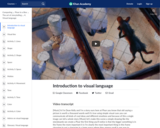
Welcome to Visual Language.
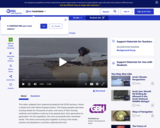
This video, adapted from material provided by the ECHO partners, provides a portrait of IŰ__óíupiaq whaling as a community activity, as told through the story of one hunt.
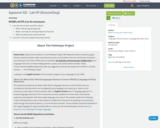
NCSSFL-ACTFL Can-Do statements: I can ask and answer questions about: What I did during spring breakWhat I normally do during breaks/my free timeWhat my ideal break would look likeI can tell a story that happened during a break.

Like most literary geeks, I’ve read a lot of Jorge Luis Borges. If you haven’t, look into the influences of your favorite writers, and you may find the Argentine short-story craftsman appearing with Beatles-like frequency. Indeed, Borges’ body of work radiates inspiration far beyond the realm of the short story, and even beyond literature as commonly practiced. Creators from David Foster Wallace to Alex Cox to W.G. Sebald to the Firesign Theater have all, from their various places on the cultural landscape, freely admitted their Borgesian leanings. That Borges’ stories — or, in the more-encompassing term adherents prefer to use, his “fictions” — continue to provide so much fuel to so many imaginations outside his time and tradition speaks to their simultaneous intellectual richness and basic, precognitive impact. Perhaps “The Garden of Forking Paths” or “The Aleph” haven’t had that impact on you, but they’ve surely had it on an artist you enjoy.
Now, thanks to UbuWeb, you can not only read Borges, but hear him as well. They offer MP3s of Borges’ complete Norton Lectures, which the writer gave at Harvard University in the fall of 1967 and the spring of 1968:
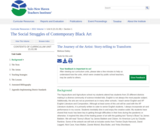
The students will explore the literary and art materials to analyze their transformative and/or healing elements. Through this exploration, students will sharpen their own voices and find within themselves a cause worth expressing for, fighting for and/or healing from. They will work on creating playlists as we travel through the texts and artwork. They will also create a piece of artwork with an artist’s statement that we can publish in a magazine representing the whole class’s effort and aspirations.

Money Stories is a series of 8 lessons dealing with financial matters of everyday life. The Money Stories Program originated when Elders at the Aboriginal Seniors Resource Centre (in Winnipeg, MB) had the idea that money management training should be taught to Indigenous youth with a focus on Indigenous values, culture, and traditional teachings. The Money Stories Curriculum was then developed and tweaked by current and past SEED Winnipeg Inc. staff.
Everyone is welcome to review the Money Stories Curriculum presented here. Note: the attached materials are read-only. SEED Winnipeg Inc. kindly requests that organizations contact them directly via email or phone to request a printable version of the instructor’s manual and to order printed versions of the workbook (there will be a fee to recover costs for the workbook). Interested organizations should have like-minded goals and values that support individuals in any of these areas: financial empowerment, education, job readiness, or life skills training. Someone with facilitation experience is an asset.
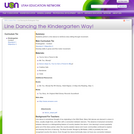
In this lesson students perform a line dance to reinforce story telling through movement.
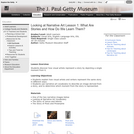
Students discover how visual artists represent a story by depicting a single moment from it.
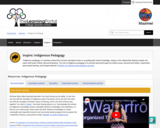
"Indigenous pedagogy is a teaching method that connects aboriginal stories as a guiding path toward knowledge, relying on the relationships between people and nature with broad, holistic interconnectedness. The role of Indigenous pedagogy is to promote learning through four distinct areas: personal and holistic, experiential, place-based learning, and intergenerational". (from Theories of Collective and Individual Learning, https://ecampusontario.pressbooks.pub/ticl/chapter/9-1-defining-indigenous-pedagogy/).
This is part of the Maamwi Hub's Discover Section, where you can find information and resources on Indigenous Peoples’ history, cultures, and perspectives, with a focus on the territory currently referred to as Ontario. Explore the entire Maamwi Hub by visiting the Provider Set linked below.
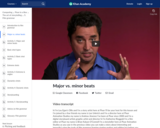
Overview of minor vs. major beats.
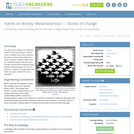
The goal of this activity is for students to learn how to tell a story in order to make a complex topic (such as global warming or ozone holes) easier for a reader to grasp. Students realize that the narrative impulse underlies even scientific and technical writing and gain a better understanding of the role of myth as a "science" of imagination that helps us to gain insight into human motivation.
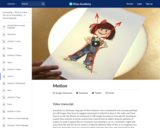
The use of motion in visual storytelling.

In this seminar, you’ll learn about dialogue, including how writers use it to “move” their stories along. As a narrator, you will practice using dialogue, which will help you understand how people involved in conflict interact genuinely. Some lines of dialogue will be longer than others; there’s a reason for that. Some narratives have very little dialogue; there’s a reason for that. Ultimately, you will continue to analyze the perspectives of characters (people) in a narrative setting to better understand the human condition and how their voices contribute to it. This seminar will require innovation on your part, as you will not only learn terminology associated with dialogue, but also put those devices into action as you create your own (mini) narrative with characters who interact.StandardsCC.1.4.9-10.MWrite narratives to develop real or imagined experiences or events.CC.1.4.9-10.NEngage and orient the reader by setting out a problem, situation, or observation, establishing one or multiple points of view, and introducing a narrator and/or characters.CC.1.4.9-10.PCreate a smooth progression of experiences or events using a variety of techniques to sequence events so that they build on one another to create a coherent whole; provide a conclusion that follows from and reflects on what is experienced, observed, or resolved over the course of the narrative.
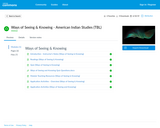
Welcome to the “Ways of Seeing and Knowing” module, where students are guided through a series of readings on how select notable American Indians "see and know" the world, quizzed on those readings, then asked to apply their understanding of content in a series of Application Activities. This module uses Team-Based Learning pedagogy and Sketchnoting. Part of series of modules belonging to the ISU course, "Native People In American Culture."
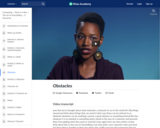
Obstacles stand in the way of our wants and needs.

Class website: The Once & Future City
What is a city? What shapes it? How does its history influence future development? How do physical form and institutions vary from city to city and how are these differences significant? How are cities changing and what is their future? This course will explore these and other questions, with emphasis upon twentieth-century American cities. A major focus will be on the physical form of cities—from downtown and inner-city to suburb and edge city—and the processes that shape them.
These questions and more are explored through lectures, readings, workshops, field trips, and analysis of particular places, with the city itself as a primary text. In light of the 2016 centennial of MIT’s move from Boston to Cambridge, the 2015 iteration of the course focused on MIT’s original campus in Boston’s Back Bay, and the university’s current neighborhood in Cambridge. Short field assignments, culminating in a final project, will provide students opportunities to use, develop, and refine new skills in “reading” the city.

Class website: The Once & Future City
What is a city? What shapes it? How does its history influence future development? How do physical form and institutions vary from city to city and how are these differences significant? How are cities changing and what is their future? This course will explore these and other questions, with emphasis upon twentieth-century American cities. A major focus will be on the physical form of cities—from downtown and inner-city to suburb and edge city—and the processes that shape them.
These questions and more are explored through lectures, readings, workshops, field trips, and analysis of particular places, with the city itself as a primary text. In light of the 2016 centennial of MIT’s move from Boston to Cambridge, the 2015 iteration of the course focused on MIT’s original campus in Boston’s Back Bay, and the university’s current neighborhood in Cambridge. Short field assignments, culminating in a final project, will provide students opportunities to use, develop, and refine new skills in “reading” the city.
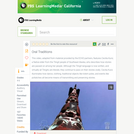
This video, adapted from material provided by the ECHO partners, illustrates how Native people preserve history and tradition through art, music, and dance.
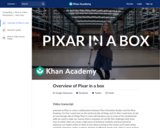
An overview of the Pixar in a Box series.